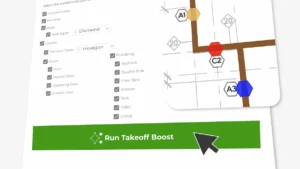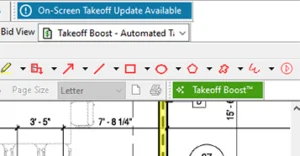It’s been a long, hot summer for anyone in construction. In July, the Associated Builders and Contractors (ABC) reported its Construction Backlog Indicator declined to 7.8 months—a full month lower than in July 2019. In addition, 47% of construction leaders reported they expect to see shrinking profits in the next six months.
In these uncertain economic times, subcontractors face mounting pressure to deliver more for less. As a result, they must walk a tightrope as their profits are being squeezed between the margins. While working lean can reduce expenses, it can also mean unexpected delays when subcontractors run low on materials or labor and projects come to a screeching halt.
Ultimately, this means that trade contractors must focus on not just being the lowest bidder, but the best bidder. In the post-COVID economy, it is all about winning repeat business from general contractors (GCs). No one wants to be viewed as a GC’s worst nightmare because they failed to deliver the work or mis-communicated information. When the price isn’t the only determining factor in a winning bid, subcontractors must take a hard look at how they can build stronger ties to GCs.
Financial Stability Provides an Edge
Inevitably, responsiveness, a positive attitude, and a sense of teamwork are all traits a GC appreciates when they turn to subcontractors for their trade expertise. GCs will also look at past performance, financials, equipment, safety, comparable projects, and project cost and payment terms.
Subcontractors should keep in mind that GCs are seeking stability since subcontractors must incur much of the cost as they will be reimbursed later. When it comes to fronting millions of dollars in expenses and labor costs, cash flow issues can have a life-or-death impact for subcontractors and negatively impact a project’s completion.
As part of their qualifying indicators, subcontractors should be able to show they are stable and qualified to do the work with the required licenses and insurance. Showing the GC they can incur these costs is always a big part of this process.
How Tech Tools Can Help Show Project Scope
No doubt, building a long-term relationship with a GC is an ongoing process. One way to accomplish this is by submitting a final bid that reflects a thorough knowledge of project scope. Describing a project in detail and explaining their approach can help a subcontractor showcase their knowledge and trade specialty. It’s crucial their final estimate provides a level of detail not often communicated to a GC. For example, a subcontractor could build trust by using estimating software to deliver a color-coded quantity takeoff.
When a subcontractor can itemize scope and quickly present varying price scenarios, it will further demonstrate their understanding of the project. The most efficient way to handle ad hoc requests on a project is by separating the bid into areas and/or phases. By using dynamic digital reporting, a subcontractor can show bid detail and summary by selected area, so they can respond quickly and accurately to the GC.
Stand Out from the Pack with Past Projects
As noted, general contractors review a whole range of issues when qualifying subcontractors—from their safety plans to their available equipment, including their ability to maintain and fuel that equipment. It may seem difficult for a subcontractor to stand out from the pack if they’re busy checking all the boxes.
Of course, the goal for any subcontractor is to build strong relationships with GCs so they can reap the rewards of repeat business. One way is by using past projects and references to their maximum impact in the qualifying process.
Normally, subcontractors will be required to reference similar projects, in size and scope. Subcontractors should list similar projects completed with scope, schedule, budget, man-hours worked, and any special considerations that were part of the project.
Don’t Forget to Communicate
Strong communication skills are essential to avoid project conflicts. Identifying and raising issues to the GC should be done as swiftly as possible. No doubt, changes on a project are to be expected, but ensuring timely and effective communication is key.
Without the right tech tools, subcontractors may end up missing a critical project update email or change order. Not having the latest versions of plans and specs could lead to delays, significant cost increases, conflicts, rework, and even legal issues.
Auditioning for the Next Project
Even when subs have a solid safety track record and strong financials, GCs often prefer subcontractors who don’t leave behind a mess or create more noise than necessary on the jobsite. Keeping on top of suppliers and handling all delivery issues is also optimal to ensure a project’s schedule isn’t adversely impacted.
Once the bid is won, subcontractors who know they are auditioning for their next job will likely find more success. By establishing their value post-bid, they can elevate themselves in the eyes of any general contractor. Are you a subcontractor who is still using manual takeoff?
Presenting a professional bid package is one way to win repeat business. If you’re ready to bid and win more work in less time, go ahead and request your 14-day free trial of
On-Screen Takeoff. Find out why so many construction pros use OST to complete takeoffs in a fraction of the time with much greater accuracy.



